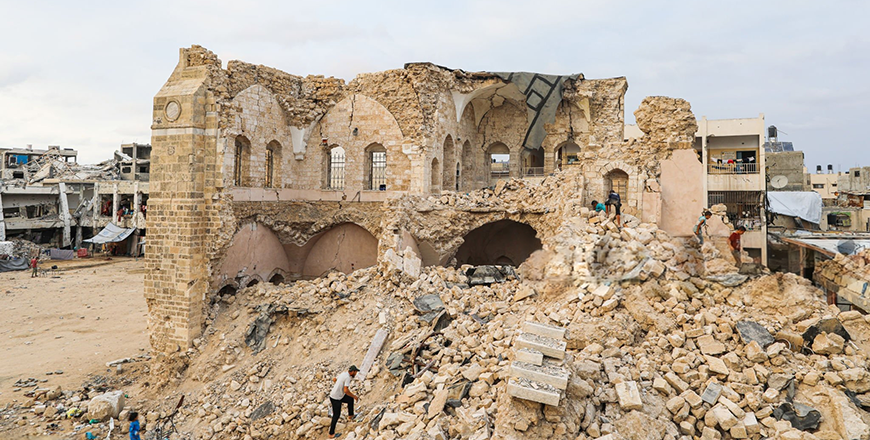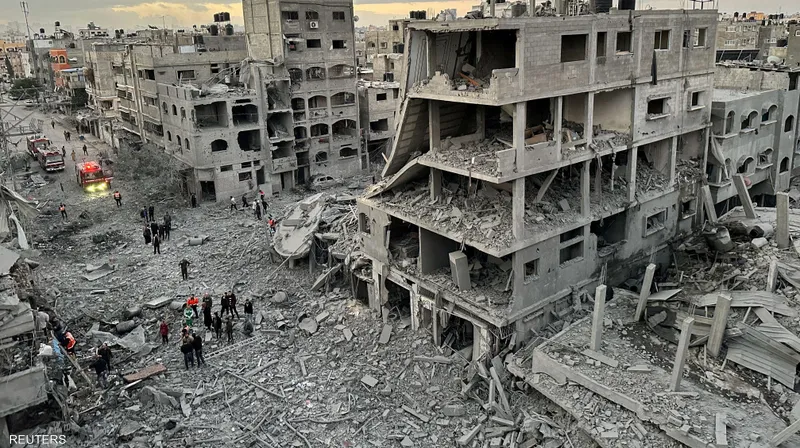
A documentary recounting Israel’s harrowing siege on Gaza’s largest health complex, Al-Shifa Hospital, killing some 170 Palestinians, premiered on Saturday in Istanbul.
Co-produced by Al Jazeera 360 and the On the Record for Humanity initiative, the premiere of Al-Shifa Hospital – 14 Days of Horror was held at the Lutfi Kirdar International Convention and Exhibition Center, with Anadolu as the global communications partner.
The premiere, attended by Turkish Justice Minister Yilmaz Tunc, Anadolu Agency Editor-in-Chief Yusuf Ozhan, Anadolu Publications and Productions Coordinator Oguz Karakas, and other important media figures, began with an exhibit of photographs taken by Anadolu photojournalists who have been documenting the genocide in Gaza since Oct. 7, 2023.
‘Palestine has won this war psychologically’
At the opening, Ihsan Aktas, one of the founders of On the Record for Humanity, said they founded the initiative to raise global awareness of Palestine following the Israeli attacks that began last year.
He added: “At this point, Palestine has won this war psychologically. Today, the number of Palestinian flags waving around the world tops the number of American and Israeli flags.”
Aktas praised news agencies like Anadolu and Al Jazeera for exposing Israel’s war crimes and highlighted the strong support from the Turkish public and media for the documentary.
He stressed Anadolu’s crucial role in spotlighting the humanitarian crisis in Gaza, commending CEO Serdar Karagoz and Tunc for their essential support in amplifying their message.
Reminder to world to hold perpetrators accountable
Producer Samhy Mostafa said: “Al Jazeera 360 is a platform that brings all of Al Jazeera’s programs together under one roof, offering access to Al Jazeera’s vast library.”
“It provides serious and positive media content that reflects and presents the truth as it is, continuing to bypass restrictions imposed by some social media platforms,” he added.
He also said: “This documentary exposes the suffering at Al-Shifa Hospital and aims to remind the world of the need to confront injustice and hold perpetrators accountable.”
After opening speeches, the documentary Al-Shifa Hospital – 14 Days of Horror was screened.
The premiere concluded with a panel moderated by journalist Enes Yalman, featuring director Obada Al Baghdadi, Gaza doctor Fadia Malhis, Al Jazeera journalist Ibrahim Saber, Academic Garbage Collection Center Secretary General Bekir Cantemir, and Haberturk TV General Manager Mehmet Akif Ersoy.
Al-Shifa Hospital siege
On the morning of March 18, Israeli forces raided Al-Shifa Hospital in Gaza, where more than 7,000 patients and displaced Palestinians had taken refuge.
During the raid and subsequent siege, more than 800 Palestinians were detained and interrogated by Israeli forces, and over 170 were killed.
After the Israeli army withdrew, mass graves containing burned human remains were discovered.
Israel has continued its brutal offensive on the Gaza Strip following a Hamas attack on Oct. 7, 2023.
The onslaught has resulted in over 40,000 Palestinian deaths, mostly women and children, and over 93,000 injuries, according to local health authorities.
The ongoing blockade of Gaza has led to severe shortages of food, clean water, and medicine, leaving much of the region in ruins.
Israel faces accusations of genocide at the International Court of Justice for its actions in Gaza.








